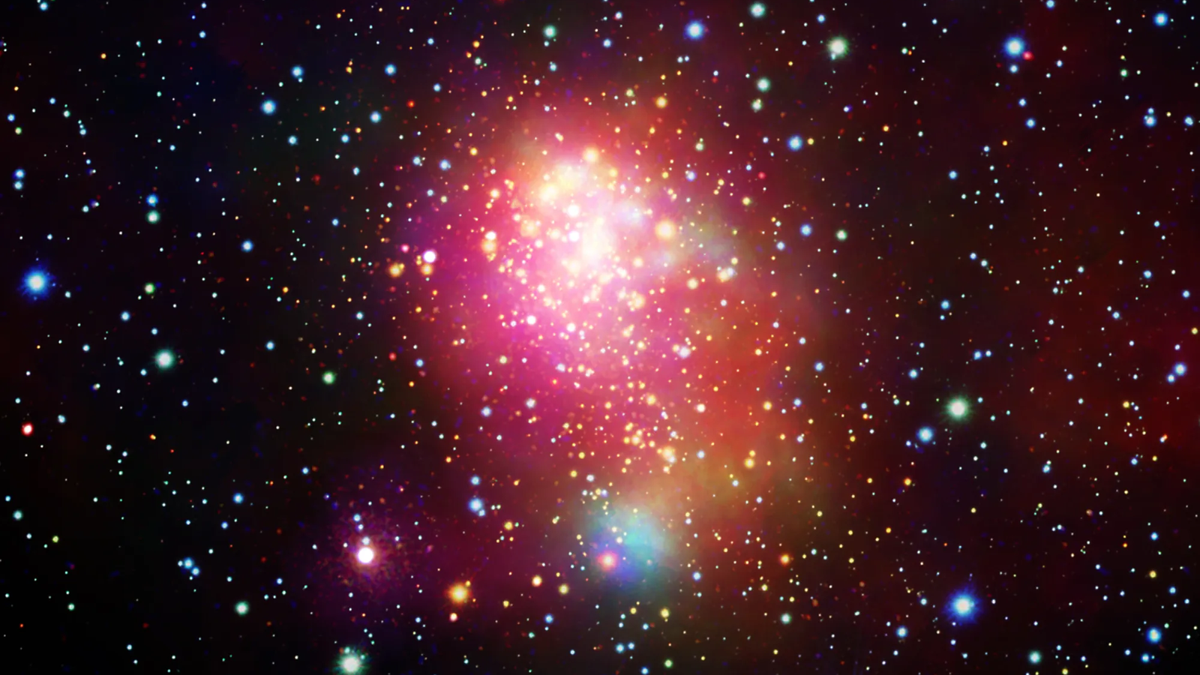It’s a bird… it’s a plane… it’s a super star cluster! NASA’s Chandra X-ray telescope has imaged a star cluster that is “super” in every way. Westerlund 1 is super big, super massive, super young, super close – and it’s creating stars at a super fast pace.
Westerlund 1 is about 13,000 light-years away from Earth – meaning it’s very close, relatively speaking – and the 3 million to 5 million-year-old star cluster is about 7 light-years wide. If that age doesn’t seem particularly young to you, consider that our middle-aged solar system is about 4.6 years old billion years old. Westerlund 1 also has a mass equivalent to a whopping 100,000 suns, and is one of the few remaining superstar clusters in the Milky Way.
Later, studying Westerlund 1 could help astronomers better understand the inner workings of these cosmic star factories. The image is part of the first data released from the Extended Westerlund 1 and 2 Open Clusters Survey (EWOCS), led by astronomers from the Italian National Institute of Astrophysics in Palermo. As part of the EWOCS program, Chandra watched Westerlund 1 for a total of about twelve days.
Related: The last major act of galactic cannibalism in the Milky Way was surprisingly recent
In the current era, the Milky Way produces very few stars; only a handful of stellar bodies are generated each year. However, our galaxy was not always so quiet. It once produced many more stars; at its peak, about 10 billion years ago, tens to hundreds of stars were born every year.
Astronomers think that this intense star formation is mainly localized in superstar clusters such as Westerlund 1. These are young star clusters with a mass of at least 10,000 times that of the Sun.
The X-rays of Westerlund 1, seen by Chandra and visible in the image as pink and white hues, are from young stars. Meanwhile, blobs of pink, green and blue represent diffusely heated gas throughout the supercluster.
The new Chandra data has tripled the number of known X-ray sources in Westerlund 1. Prior to the EWOCS project, Chandra had detected 1,721 X-ray sources in the superstar cluster; in contrast, the EWOCS data revealed almost 6,000 X-ray sources. These include faint stars with a mass lower than that of the Sun.
This gives astronomers a new population of stars in Westerlund 1 to study. That means that Westerlund 1’s proximity not only makes it a good target for investigating star formation as a whole and decoding the influence of such star cluster environments on planet birth, but that the superstar cluster is also useful for investigating how stars with develop different masses.
Chandra also found that 1,075 of the stars she detected are packed into a region four light-years wide at the heart of Westerlund 1. To imagine how dense this region is with stars, consider that there are 4.24 light-years between them the sun and the sun sits. and its nearest stellar neighbor, Proxima Centauri.
The more diffuse pink blob that dominates the Chandra image of Westerlund 1 represents a halo of hot gas at the center of the superstar cluster. Not only could this aspect of this region contribute to a more precise mass estimate of Westerlund 1, but it could also help assess how this particular collection of stars formed and how it has changed over time.
The EWOCS results are discussed in a paper published in February in the journal Astronomy and Astrophysics.
